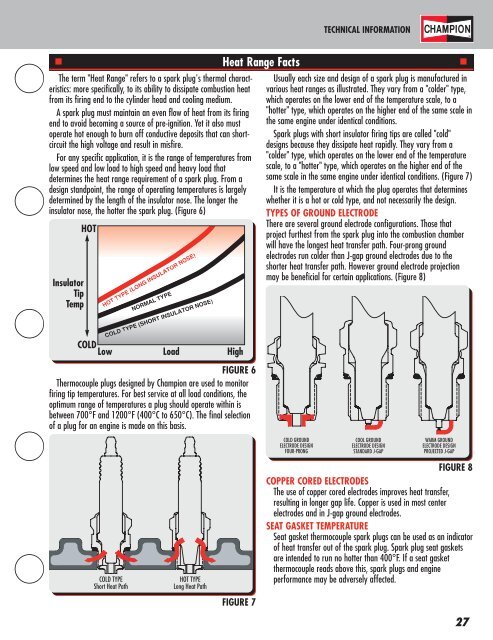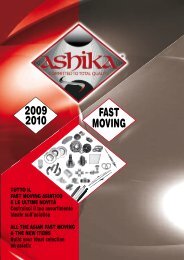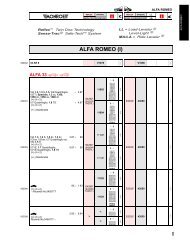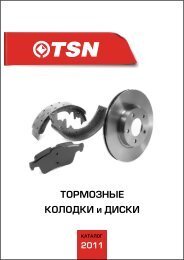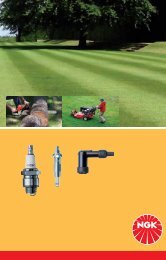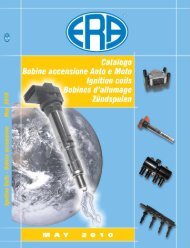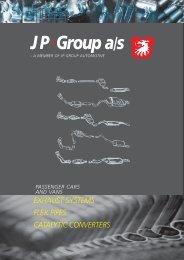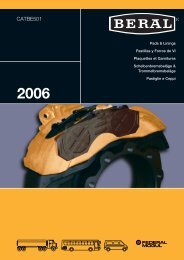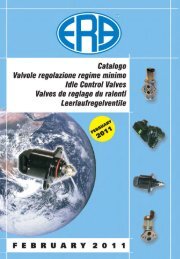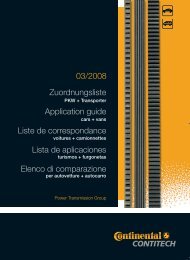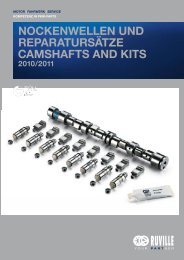THE WORLD'S FAVORITE SPARK PLUG.™
THE WORLD'S FAVORITE SPARK PLUG.™
THE WORLD'S FAVORITE SPARK PLUG.™
- No tags were found...
You also want an ePaper? Increase the reach of your titles
YUMPU automatically turns print PDFs into web optimized ePapers that Google loves.
TECHNICAL INFORMATION■ Heat Range Facts ■The term "Heat Range" refers to a spark plug's thermal characteristics:more specifically, to its ability to dissipate combustion heatfrom its firing end to the cylinder head and cooling medium.A spark plug must maintain an even flow of heat from its firingend to avoid becoming a source of pre-ignition. Yet it also mustoperate hot enough to burn off conductive deposits that can shortcircuitthe high voltage and result in misfire.For any specific application, it is the range of temperatures fromlow speed and low load to high speed and heavy load thatdetermines the heat range requirement of a spark plug. From adesign standpoint, the range of operating temperatures is largelydetermined by the length of the insulator nose. The longer theinsulator nose, the hotter the spark plug. (Figure 6)InsulatorTipTempHOTHOT TYPE (LONG INSULATOR NOSE)NORMAL TYPECOLD TYPE (SHORT INSULATOR NOSE)COLDLow Load HighFIGURE 6Thermocouple plugs designed by Champion are used to monitorfiring tip temperatures. For best service at all load conditions, theoptimum range of temperatures a plug should operate within isbetween 700°F and 1200°F (400°C to 650°C). The final selectionof a plug for an engine is made on this basis.Usually each size and design of a spark plug is manufactured invarious heat ranges as illustrated. They vary from a "colder" type,which operates on the lower end of the temperature scale, to a"hotter" type, which operates on the higher end of the same scale inthe same engine under identical conditions.Spark plugs with short insulator firing tips are called "cold"designs because they dissipate heat rapidly. They vary from a"colder" type, which operates on the lower end of the temperaturescale, to a "hotter" type, which operates on the higher end of thesame scale in the same engine under identical conditions. (Figure 7)It is the temperature at which the plug operates that determineswhether it is a hot or cold type, and not necessarily the design.TYPES OF GROUND ELECTRODEThere are several ground electrode configurations. Those thatproject furthest from the spark plug into the combustion chamberwill have the longest heat transfer path. Four-prong groundelectrodes run colder than J-gap ground electrodes due to theshorter heat transfer path. However ground electrode projectionmay be beneficial for certain applications. (Figure 8)COLD GROUNDELECTRODE DESIGNFOUR-PRONGCOOL GROUNDELECTRODE DESIGNSTANDARD J-GAPWARM GROUNDELECTRODE DESIGNPROJECTED J-GAPCOLD TYPEShort Heat PathHOT TYPELong Heat PathFIGURE 7FIGURE 8COPPER CORED ELECTRODESThe use of copper cored electrodes improves heat transfer,resulting in longer gap life. Copper is used in most centerelectrodes and in J-gap ground electrodes.SEAT GASKET TEMPERATURESeat gasket thermocouple spark plugs can be used as an indicatorof heat transfer out of the spark plug. Spark plug seat gasketsare intended to run no hotter than 400°F. If a seat gasketthermocouple reads above this, spark plugs and engineperformance may be adversely affected.27


